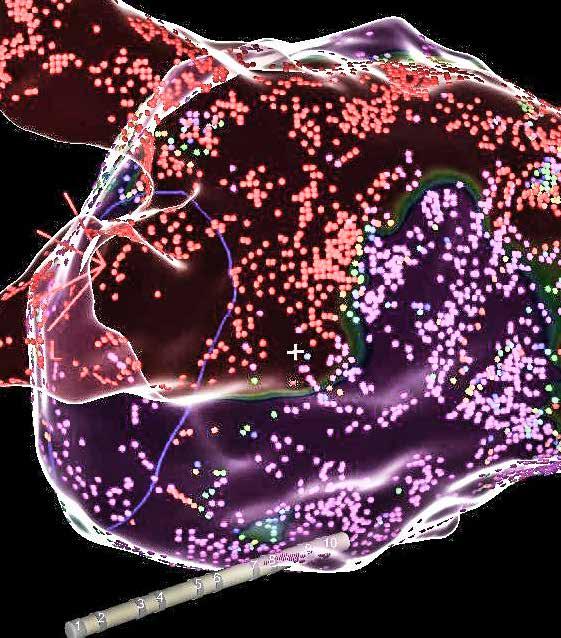
1 minute read
NEW TECHNOLOGY
The use of two new technologies, Octaray Catheter and the NuVision 4D ICE catheter, now provides a more precise view into the electrical signals in a patient’s heart for a variety of electrophysiology (EP) procedures and allows enhanced clarity, speed, and precision when treating arrythmias, left atrial appendage (LAA) occlusion procedures, and others.
Nuvision 4d Ice Catheter
Georgia Heart Institute was the first hospital in the state to use the 4D ICE catheter for a Left Atrial Appendage (LAA) closure procedure. The 4D ICE Catheter displays real time volumetric imaging along with both 2D and 4D Color Doppler flow ability, independent distal tip rotation and penetration depth up to about 15 cm. In addition to the high visual quality, two benefits of using the 4D ICE catheter is not having to perform a transesophageal echocardiogram (TEE) and sometimes, eliminating the need for general anesthesia but instead, placing the patient under twilight sleep while still achieving optimal results. Before the use of the 4D ICE catheter, procedures like Watchman devices may have taken longer to complete and proven to be more difficult. Now, total procedure time is shorter and success rates are better. The Structural Heart Center also incorporates the 4D ICE catheter during difficult cases. Certain procedures would not be possible as a non-invasive service if the 4D cath was not available. The use of this recent technology adds a higher level of confidence and allows the EP team and interventional cardiologists to see what they need to and add an element of ease to their workload.
Electrophysiology Procedures
OCTARAY MAPPING
DIAGNOSTIC CATHETER
The Octaray catheter debuted its first commercial use at Georgia Heart Institute in August of 2022. Like its name suggests, the Octaray features eight spines with multiple electrodes on each that allows for greater precision and detail for mapping cardiac images. The Octaray catheter gives enhanced definition of the electrical activity to map the complex circuits in patients diagnosed with atrial fibrillation (AFib), atrial flutter, and atrial tachycardia. This allows for faster procedure completion times for the patient in cath lab and more successful outcomes. A considerable number of cases that would have otherwise proven difficult and complicated, have achieved success —with no reoccurrence of symptoms—because Octaray provided better electrical visualization within the heart.







